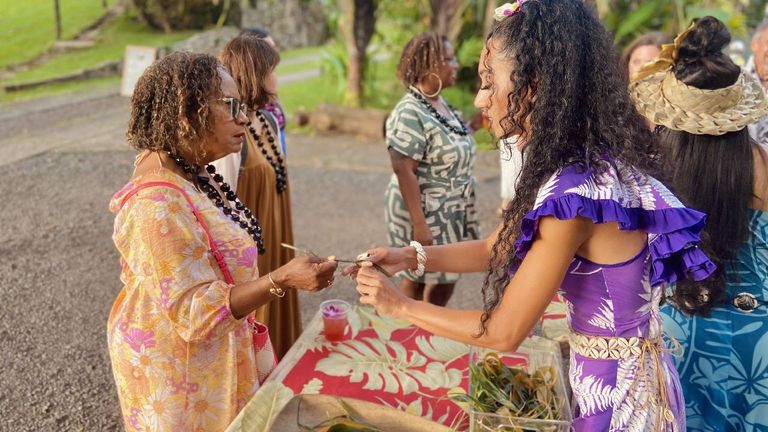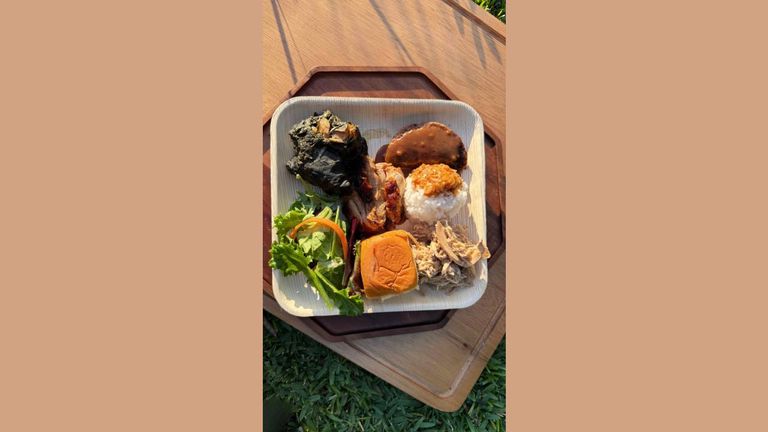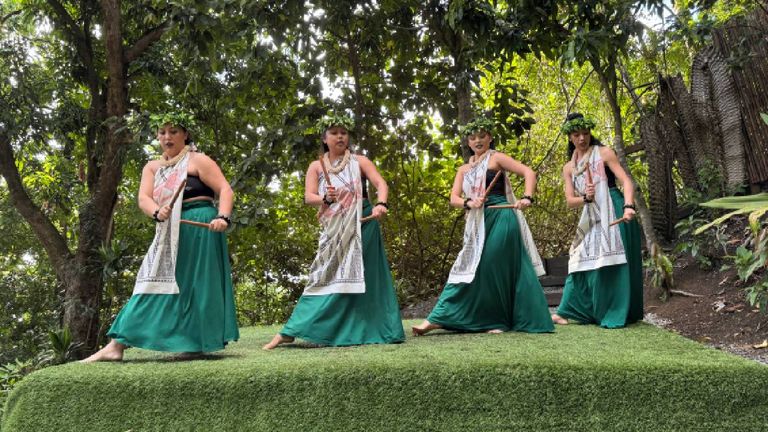The Experience Nutridge Luau, set about 1,050 feet up the slopes of Oahu’s Mount Tantalus, is the closest Hawaiii visitors will get to a backyard luau — and that’s what I loved about it.
Here's what travel advisors should know about the luau and its home, the Nutridge Estate, which is on 22 acres that were originally part of entrepreneur Ernest Shelton Van Tassel’s home.
A Hidden Gem Above Honolulu
In 1921, the Massachusetts native obtained a 50-year lease on 75 acres from Hawaii’s territorial government and started growing macadamia trees. A year later, he established the Hawaii Macadamia Nut Company as the first commercial macadamia plantation in the Islands and commissioned renowned architect Hart Wood to design a house, so he could live where he worked. It was built in 1925, and Van Tassel dubbed his estate Nutridge. He lived there until his death in 1947.
Recognized as a State Historic Site and listed on the National Register of Historic Places on Dec.16, 1981, the property is now owned by the state of Hawaii and lies within Puu Ualakaa State Wayside park. Access, however, is restricted to groundskeepers, maintenance crews and those attending and staffing the luau and private events.
Nutridge is located only about 6 miles (a 20-minute drive) from Waikiki. But as my boyfriend, Walter, and I wound our way up Tantalus through a quiet, tree-shaded residential community, we felt much farther from Oahu’s urban core. A lookout less than 1 mile from the luau’s entrance revealed a panorama encompassing Diamond Head, Manoa Valley, Pearl Harbor and the spectacular Honolulu skyline. Guests who opt to drive instead of taking shuttle transportation for an extra fee should allow time to admire the view and snap pictures before continuing to Nutridge.
A Different Kind of Luau
Unlike most luaus in Hawaii, which accommodate hundreds, Experience Nutridge is capped at just 80 people. It was nice being part of an intimate group and hearing our hosts refer to us as “family,” no matter that we hailed from Tokyo to Tennessee.
 Visitors can make a ti leaf bracelet at the luau.
Visitors can make a ti leaf bracelet at the luau.
Credit: 2025 Experience Nutridge LuauAnother plus: In tune with the local lifestyle, this luau was laid-back and low-key. Don’t expect elaborate costumes, sets or lighting; rather, it exudes down-home charm from start to finish — four full hours. Narrators immediately put us at ease by intertwining quips and personal anecdotes with fascinating insights into Hawaiian history and culture.
As our group sat and sipped mai tais beneath a lofty macadamia tree that Van Tassel had planted in the 1920s, a young man talked at length about the imu. Guests from afar were enthralled as he explained how this underground oven was constructed and used.
In olden times, cooking pits were dug in various sizes, depending on what food was going into them. A whole pig, for example, required an imu considerably larger than the one we were looking at. Fish, taro, breadfruit and sweet potato would also go into the imu, the narrator said, and everything was steamed between layers of hot rocks and ti and banana leaves.
 The luau includes a hearty buffet dinner.
The luau includes a hearty buffet dinner.
Credit: 2025 Experience Nutridge LuauI was born and raised in Hawaii, so I knew this, but I was happy to learn something new: how small items were prepared for the imu. Another young man came forward to describe and demonstrate this process. He deftly removed the rib of a ti leaf, wrapped sweet potato pieces in the leaf and tied the package neatly with the detached rib. Nothing, he said, was wasted in olden Hawaii.
Next, our group strolled to an open-air “theater” surrounded by towering trees where a small but energetic cast presented songs and dances from Hawaii, Samoa and Aotearoa (Maori New Zealand). Walter and I were lucky to snag front-row seats, which were just a few feet from the stage.
My favorite was the poi ball dance, poi meaning “ball” in the Maori language. Although it was fun to watch, the narrator pointed out that long ago, this dance was not just for amusement. To the beat of a rhythmic song, Maori men and women swung a ball attached to a cord to improve their coordination and to develop strength and dexterity in their hands and wrists. For women, this was helpful for weaving; for men, it improved their ability to handle weapons in battle.
 A Maori poi ball dance performance takes place in an open-air theater
A Maori poi ball dance performance takes place in an open-air theater
Credit: 2025 Cheryl Chee TsutsumiWhen the show was over, guests could decide how they wanted to spend the next 45 minutes. Having a green thumb, Walter wanted to get a closer look at Nutridge’s beautiful gardens, where dozens of varieties of fruits, vegetables, herbs and ornamental plants and trees were flourishing. I lingered in the activity area with most of our group to test my skill at ulu maika (bowling), oo ihe (spear throwing) and ti leaf bracelet-making.
A Sunset to Remember
Others chose to relax with a cocktail on the patio of the historic Van Tassel house, where a hearty buffet — including traditional luau fare of kalua pig, laulau and haupia — was served. Right on cue, sunset painted the sky with brilliant strokes of orange, purple and magenta before we enjoyed dinner and more entertainment.
Little did we know, another treat was in store. As Walter and I headed home down the hill, the city of Honolulu appeared around a bend below us, mesmerizing in a mantle of dazzling lights.